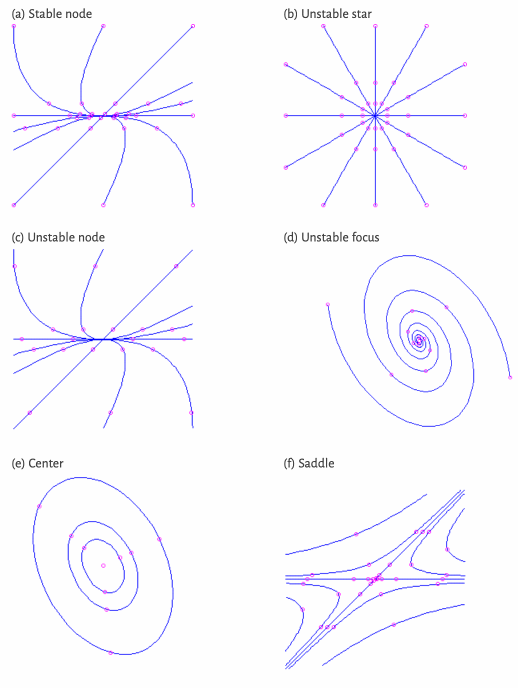Homework 3 - Due: 02/08
Problem 1
Consider the following matrices:
- Compute
- For
- In each case, determine whether the solutions of
- Try to state the general rule which can be used to determine, by looking at the eigenstructure of
Problem 2
The pictures in this demo page show possible trajectories of a linear system
| # | Configuration | # | Configuration |
|---|---|---|---|
| (a) | (b) | ||
| (c) | (d) | ||
| (e) | (f) |
Match each picture with the corresponding eigenvalue distribution. Justify your answers using your knowledge of the solution of

Problem 3
This exercise illustrates the phenomeom known as resonance. Consider the system
where
Problem 4
Compute the state transition matrix
Problem 5
Consider the LTV system
Being a nonsingular matrix,
- Using the properties of state transition matrices from class, show that
- Deduce from a) that
- Prove that
- Consider the LTV system from Problem 4 . Find new coordinates
Problem 6
Prove the variation-of-constants formula for linear time-varying control systems stated in class:
Hint: Differentiate both sides. See also Class Notes, end of Section 3.7.
